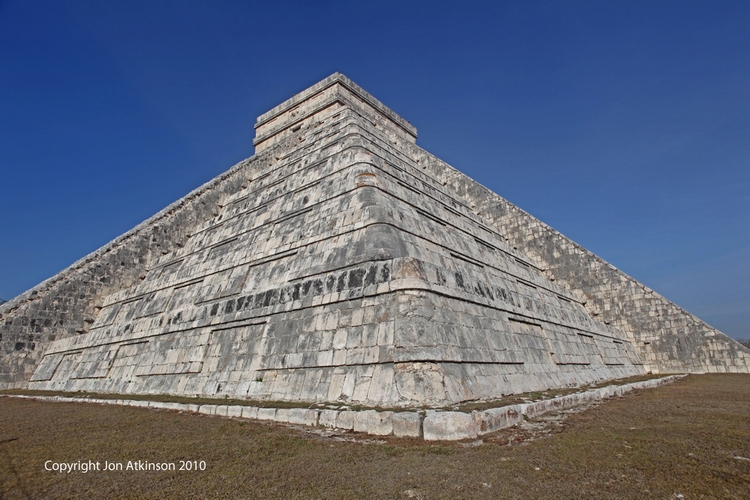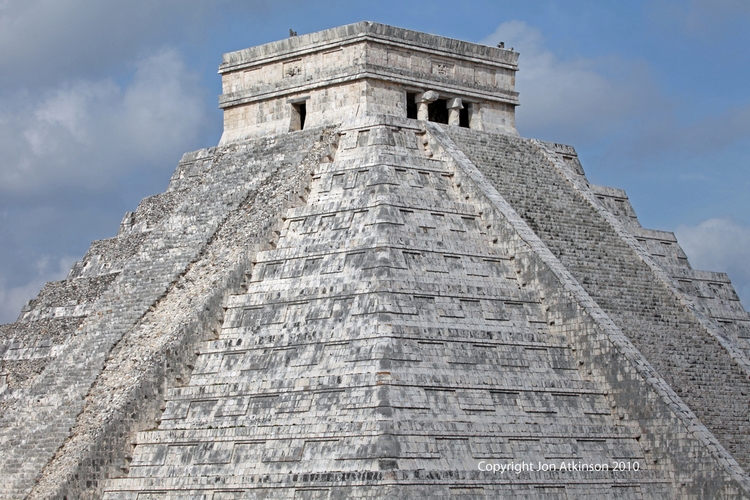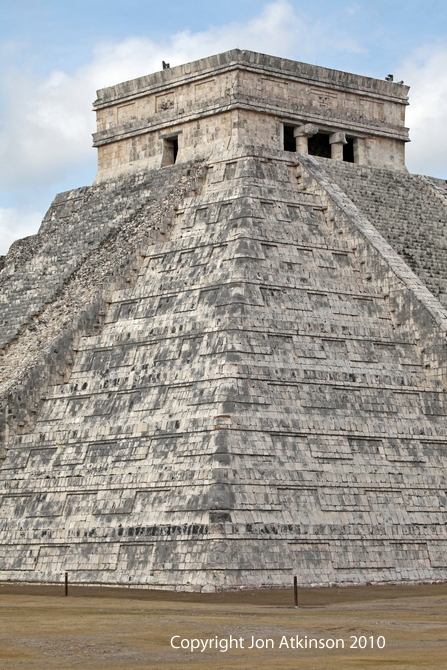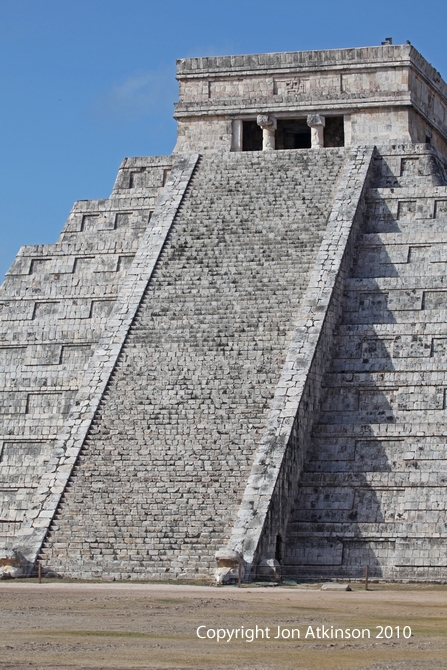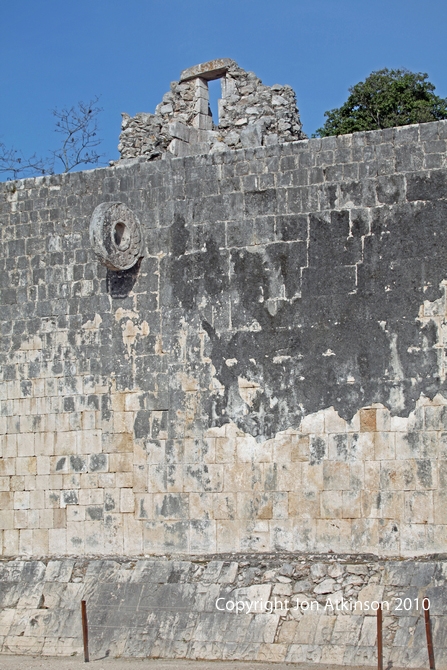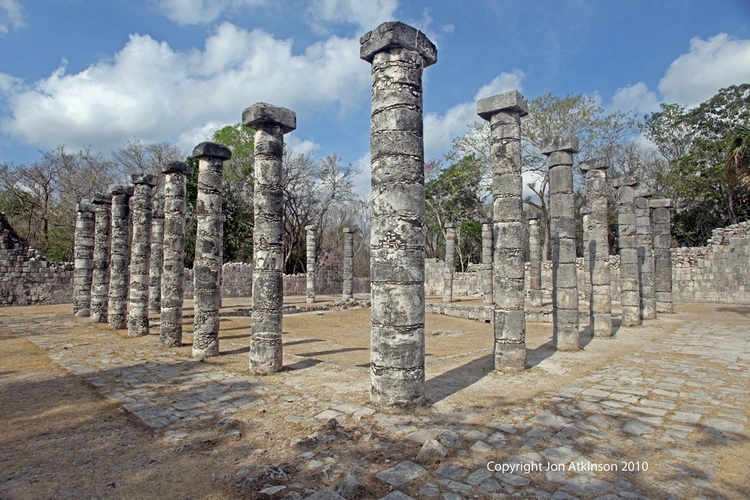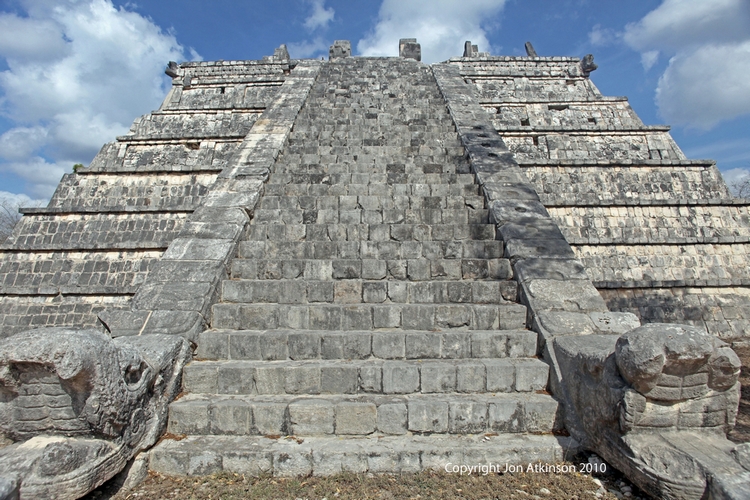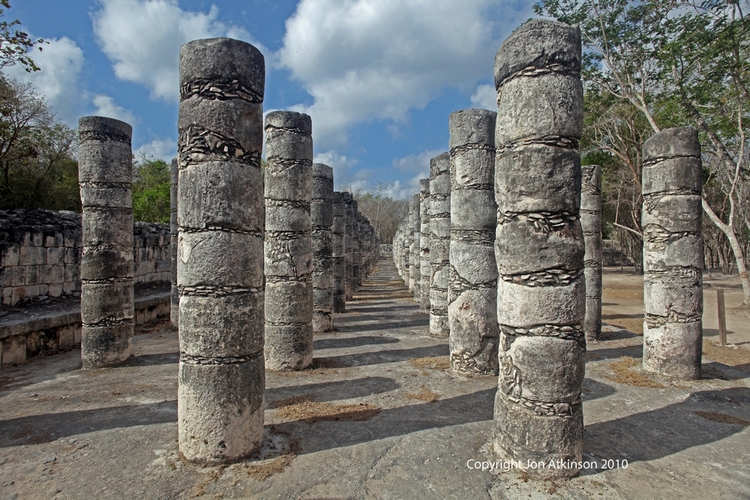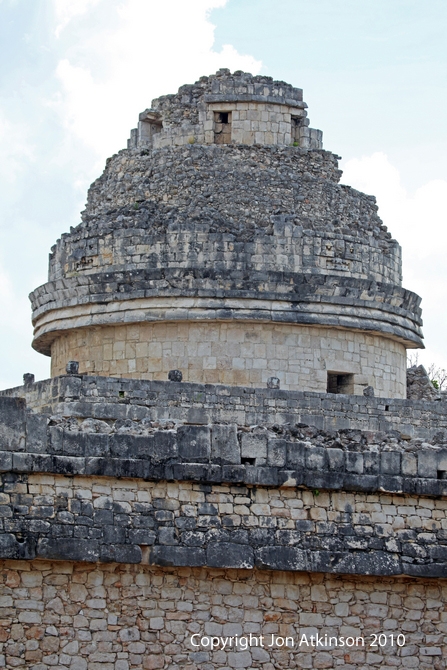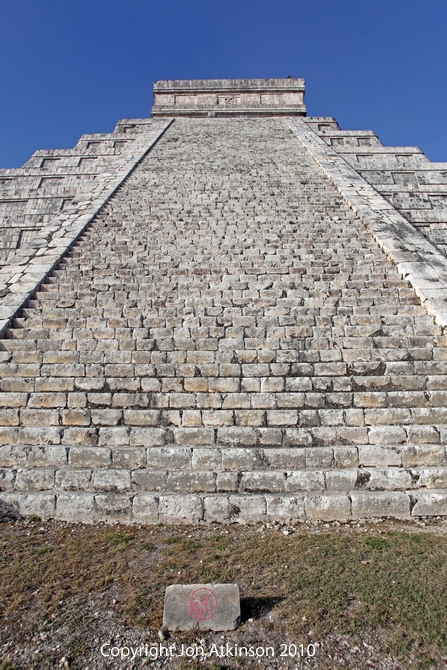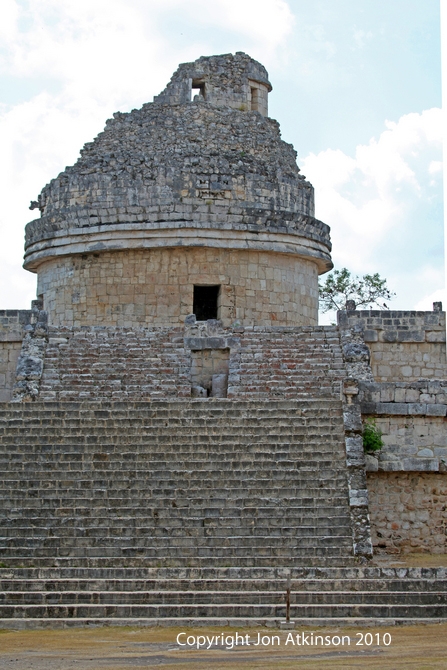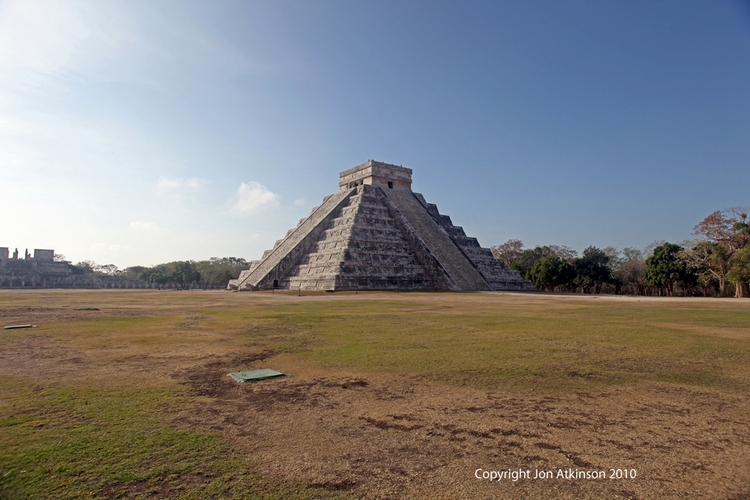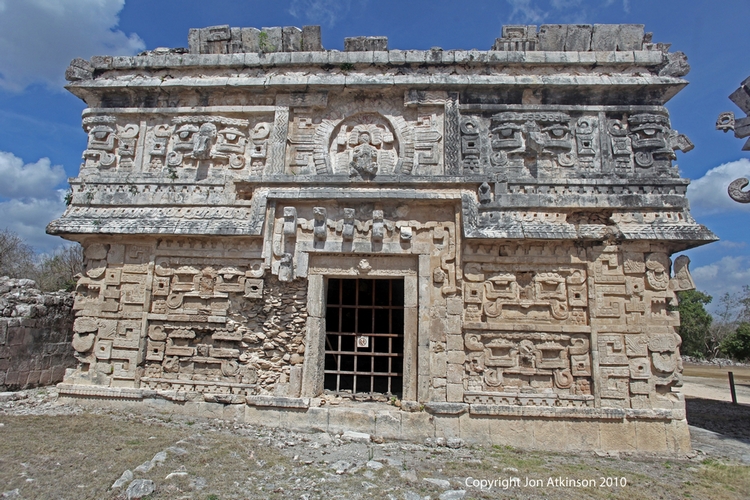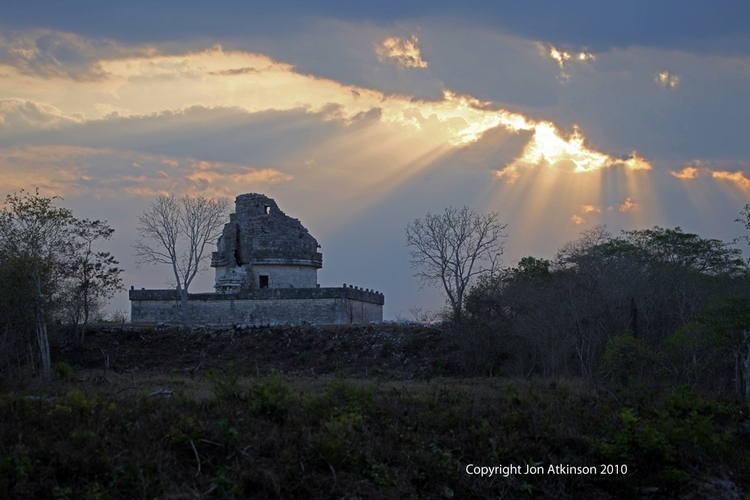Chichen Itza 1 - Pyramid of Kukulkan: Chichen Itza, meaning “at the mouth of the Itza well”, is a Mayan City on the Yucatan Peninsula in Mexico. Most eperts agree that from approximately 550 AD to 800 AD, Chichen Itza existed mainly as a ceremonial center for the Maya civilization. |
Chichen Itza 2 - Pyramid of Kukulkan: The Temple of Kukulkan, the Feathered Serpent God is the largest and most important ceremonial structure at Chichen Itza. Called El Castillo (the Castle) by the Spaniards, thel pyramid was built during the 11th to 13th centuries directly upon the foundations of previous temples. |
Chichen Itza 3 - Pyramid of Kukulkan: The Pyramid of Kukulkan towers above the other buildings at 79 feet (24 meters) high.The temple at the top of the pyramid has carvings of Chac, the rain god, and Quetzalcoatl, the serpent god. |
Chichen Itza 4 - Pyramid of Kukulkan: In addition to the intricate visual aspects of El Castillo, interesting auditory phenomenon occurs which is said to be tied to the Mayan’s sacred bird, the Quetzal. Standing in front of the pyramid, a single, series, or group of hand claps produce a distinct chirping sound, which tour guides say sounds just like the rare Quetzal.
| Chichen Itza 5 - Pyramid of Kukulkan: It is believed that the Kukulkan Pyramid was built for astronomical purposes. During the vernal and autumnal equinoxes at around 3pm the sunlight bathes the western balustrade of the pyramid's main stairway. This causes 7 isosceles triangles to form imitating the body of a serpent roughly 37 yards long that creeps downwards until it joins the huge serpent's head carved in stone at the bottom of the stairway. |
Chichen Itza 6 - Pyramid of Kukulkan: The Great Ball Court (Juego de Pelota) is the largest mayan ball court and was used for playing the Mesoamerican ballgame. It measures 166 by 68 metres. The imposing walls are 12 metres high, and in the center, high up on each of the long walls, are rings carved with intertwining serpents. There are eight other much smaller ball courts at Chichen Itza.
|
Chichen Itza 8 -The Ossario Pyramid, The Ossario Group: The Ossario Group has some important constructions, among them the Ossario, the Temple of Xtoloc and the Platform of Venus. The Ossario, or The Ossuary, is a four-sided pyramid, smaller than El Castillo, with stairways that lead to a temple on the top. At the center is an opening into the pyramid which leads to a natural cave 12 meters below which was a communal graveyard. |
Chichen Itza 9 - Temple of a Thousand Warriors (Columns), Chitzan Itza: Along the south wall of the Temple of Warriors are a series of what are today exposed columns, although when the city was inhabited these would have supported an extensive roof system which may have been used as a market place. |
|
Chichen Itza 10 - El Caracol Observatory: One of the most impressive structures is the Caracol, named for its curved inner stairway reminiscent of a snail, The Observatory was constructed taking into account several astronomical measurements notably that its windows were aligned with the four cardinal directions and the position of the setting sun at the equinoxes. |
Chichen Itza 11 - Pyramid of Kukulkan: Each of the four faces incorporates a broad, steep staircase consisting of 91 steps that ascends to the top platform. Counting the top platform as an additional step gives a total of 365 steps: 1 step for each day of the year. These stairways also divide the nine terraces of each side of the pyramid into eighteen segments, representing the eighteen months of the Mayan calendar. |
Chichen Itza 12 - El Caracol Observatory: The building was constructed in an intermediate period between the Terminal Classic (9th-10th centuries AD) and the Early Post Classic (10th-13th centuries), in different phases. It is know that this tower was used for astronomy. |
Chichen Itza 13 - Pyramid of Kukulkan: Sunrise over the Pyramid of Kuklukan. |
Chichen Itza 14 - Las Monjas complex of buildings: In the Central Group is the Las Monjas Complex (The Nunnery). One of its most beautiful constructions is the Church, a one-chamber building with decorations dedicated to the rain god Chaac. Despite its name, constructions in this complex held government offices and palaces. |
Chichen Itza 15 - El Caracol Observatory: Sunset over the El Caracol Observatory. |


